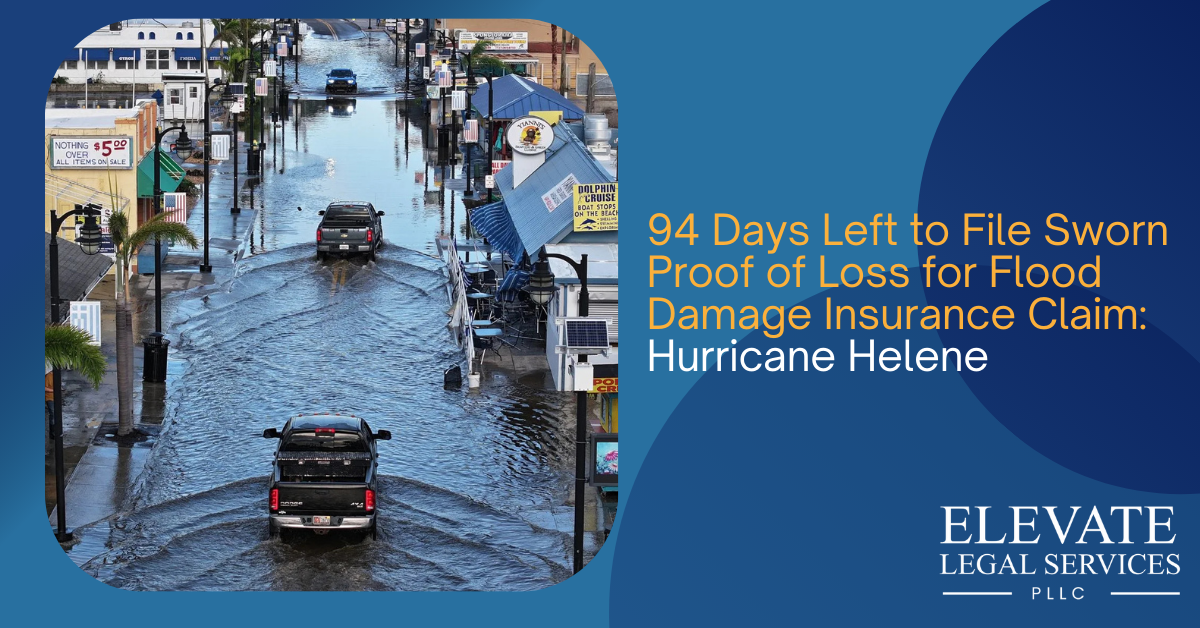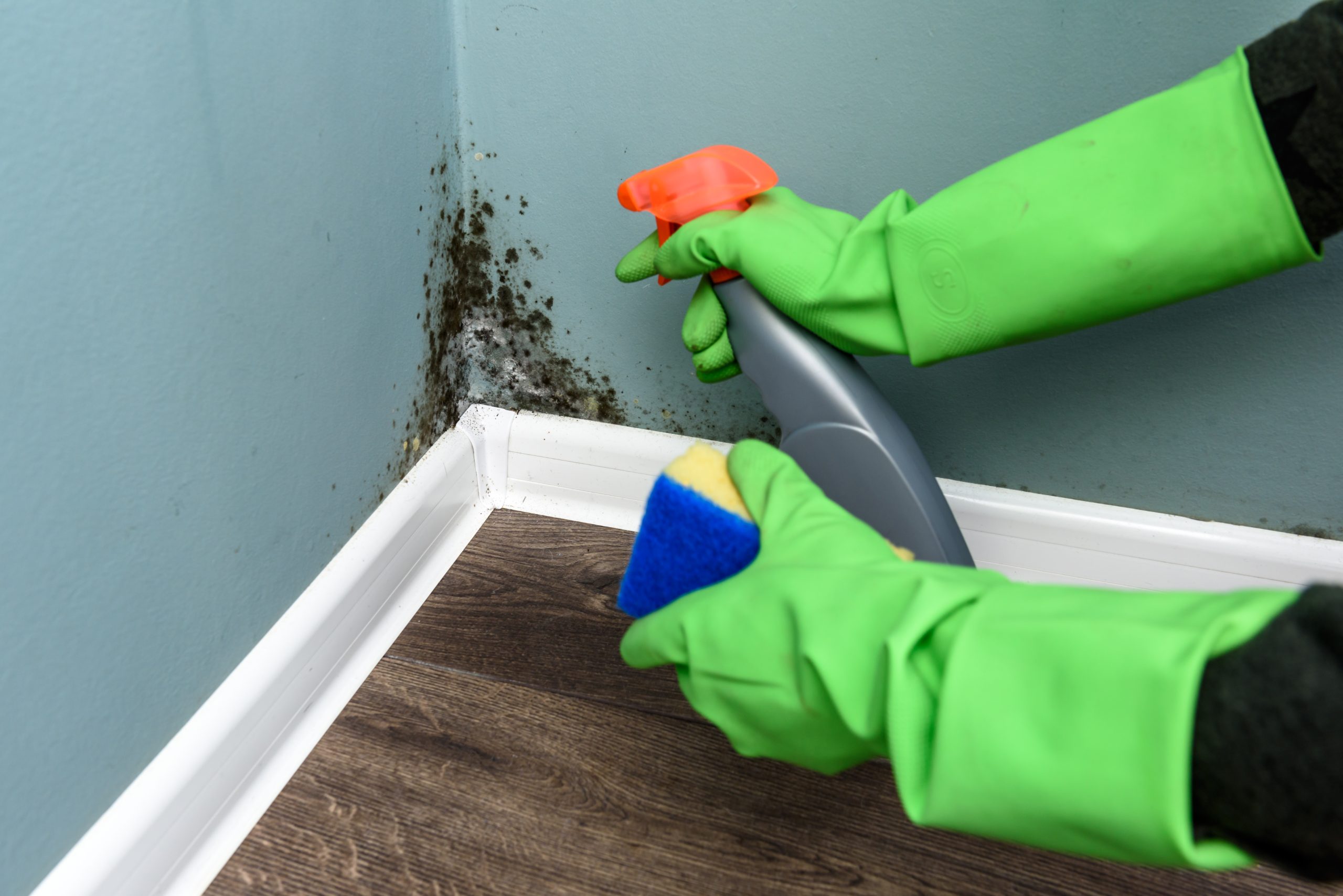
If your property sustained flood damage during Hurricane Helene, time is running out — you now have 94 days to submit your Sworn Proof of Loss (POL) for your flood insurance claim. Filing this document is crucial to ensure your insurance company processes your claim and provides the compensation you’re entitled to under your policy. The National Flood Insurance Program (NFIP) requires that this form be submitted within a specific timeframe and missing the deadline could result in a denied claim. To make sure you get the compensation you deserve from your flood damage insurance claim, Elevate Legal Services, PLLC, is here to guide you through every step of the process. Call us now at 561-770-3335 or email us at [email protected] for assistance when filing an NFIP flood damage claim.
Here’s how you can ensure the process goes smoothly:
What is Sworn Proof of Loss?
A Sworn Proof of Loss (POL) is a formal legal document that outlines the extent of the flood damage to your property and the total amount you’re claiming from your flood insurance provider. It must be submitted along with supporting documentation, such as photographs, repair estimates, receipts, and detailed descriptions of the damaged items.
For those affected by Hurricane Helene, the deadline has been extended, providing 94 days to file the form. Missing this deadline can result in your claim being denied, making it essential to prioritize the filing process.
Steps to File Your Sworn Proof of Loss
To ensure your claim is processed correctly, follow these important steps:
1. Document the Damage Thoroughly
Start documenting flood damage as soon as it’s safe to do so. Take clear, detailed photos and videos to capture:
- Interior damage: Document any damage to walls, ceilings, floors, and appliances.
- Personal belongings: Take inventory of damaged electronics, furniture, and valuable items.
- Water levels: Show water lines or marks on walls indicating the height of the floodwater.
- Exterior damage: Capture damage to garages, fences, landscaping, and outdoor structures.
A comprehensive record of the damage will significantly strengthen your claim.
2. Gather Receipts and Records of Repair Costs
Keep records of all expenses related to the flood damage, including:
- Emergency repairs: Receipts for any immediate repairs needed to prevent further damage.
- Replacement costs: Documentation for items you’ve had to replace due to flood damage.
- Temporary housing: Receipts for hotel stays or rental expenses if you are displaced.
- Professional services: Invoices from contractors, plumbers, and other professionals working on repairs.
These records are essential for proving the extent of your financial losses and ensuring full compensation.
3. Obtain Repair Estimates
Have licensed contractors assess the damage and provide detailed repair estimates. These estimates offer an accurate picture of the restoration costs, which your insurer will use to assess the claim.
4. Complete the Proof of Loss Form
Your insurance adjuster or provider will supply the Sworn Proof of Loss form. Be sure to fill out accurately, including:
- Your policy number and other identifying information.
- Descriptions of damaged areas, personal belongings, and exterior property.
- An accurate estimate of the total damage, based on the documentation and repair estimates you’ve gathered.
Make sure to include all supporting evidence (photos, receipts, and estimates) when submitting the form.
5. Submit the Proof of Loss on Time
With 94 days left, ensure you submit your Proof of Loss form promptly. Although the NFIP generally requires this form within 60 days, the extended deadline for Hurricane Helene provides additional time. However, it’s best to submit your documentation early to avoid any last-minute complications that could delay the process or result in claim denial.
Why Meeting the Deadline is Critical
Submitting your Sworn Proof of Loss within the required timeframe is crucial. The NFIP mandates that homeowners submit the form within 60 days of the event, though extensions like the current 94-day period may be granted. Missing this deadline for submitting incomplete information can lead to claim denial, leaving you responsible for all repair costs.
By meeting the deadline, you ensure your claim is valid and that you can secure the compensation needed to recover from flood damage.
Considering Hiring a Professional for Assistance
Filing a flood insurance claim can be complex, especially if you’re dealing with extensive damage. To ensure your claim is handled correctly, consider hiring a public adjuster or a flood damage attorney. These professionals can:
- Help you document the damage thoroughly.
- Ensure your Proof of Loss form is filled out accurately.
- Negotiate with your insurance company to maximize your payment.
Hiring an expert can save time and stress, especially if you’re unfamiliar with flood insurance policies or facing a complicated claim.
Conclusion
With 94 days remaining to file your Sworn Proof of Loss for damage caused by Hurricane Helene, it’s vital to take action immediately. Start documenting the damage, gather necessary receipts and estimates, and submit your form well before the deadline to ensure your claim is processed smoothly.
If you’re uncertain about any part of the process or feel overwhelmed, consider consulting a professional to guide you. Contact Elevate Legal Services, PLLC, at 561-770-3335 or email us at [email protected] for expert guidance. Don’t risk making costly mistakes, let us help you get the financial relief you need.






